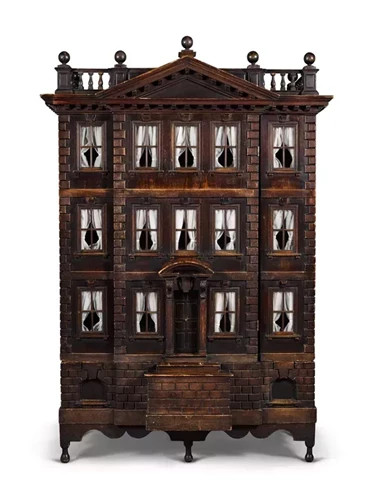
The early 18th century house was sold at Sotheby’s May 23 sale of The Ballyedmond Collection and the buyer applied for an export licence to take it out of the country.
Now a buyer to keep it in the UK is being sought by the Department for Digital, Culture, Media & Sport to match an asking price of £65,000 (plus £13,000 VAT).
Arts minister Michael Ellis said: “This striking piece is a captivating window into the history of childhood.”
Outstanding significance
The decision to defer the export licence follows a recommendation by The Reviewing Committee on the Export of Works of Art and Objects of Cultural Interest which is administered by The Arts Council.
RCEWA member Peter Barber said: “This captivating and little altered house in miniature takes us into the elegant 18th century home.”
The RCEWA made its recommendation on the grounds of the house’s outstanding significance for the study of the history and material culture of childhood.
Made between 1720-40 of mahogany, oak and softwood, with glazed windows, it is believed to be one of only around 30 surviving examples of pre-1760 English baby houses.
It descended through the family of William Edward Forster, the Liberal MP who introduced the Education Act of 1870 and was later chief secretary for Ireland. It passed through the ownership of dealer Christopher Gibbs and was later sold at Bonhams in 2009 before the Sotheby’s sale.





